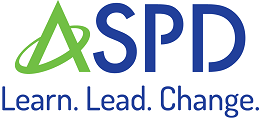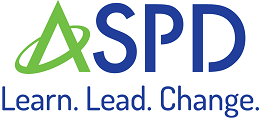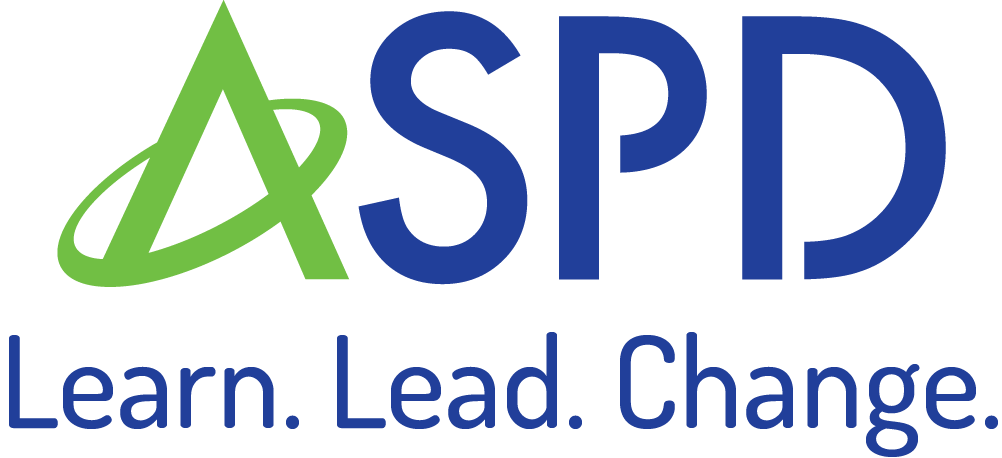STAGES OF ENGLISH LANGUAGE DEVELOPMENT
level 4
Intermediate Fluency
At this stage, learners can use more complex sentence structures and engage in longer conversations. They can express thoughts, provide explanations, and ask clarifying questions. Their listening comprehension allows them to follow lessons with some scaffolding, though academic vocabulary remains challenging.
Learners at this stage of language development demonstrate greater accuracy in grammar and word order, though errors still occur, especially when using unfamiliar structures or abstract ideas. Reading comprehension expands into grade-level texts with support, and writing reflects improved organization and use of cohesive devices.
By the end of this stage, language learners show the ability to participate in academic discussions and complete assignments that require analysis and explanation. They are transitioning from conversational competence toward deeper academic proficiency.
Details: Level 4 - Intermediate Fluency
General Overview
Students at the Intermediate Fluency stage demonstrate good comprehension and can speak in more complex sentences with fewer grammatical errors. They can engage in academic discussions and use English in new and more abstract contexts. Their vocabulary is significantly larger (around 6,000 active words), including more academic and content-specific terms. While they may still struggle with some nuances of the language and complex texts, they are becoming more confident and capable users of English. This stage may take three to five years (or more) to reach from the beginning of language learning.
Scenario
Student: Isabella, Grade 11
Background: Isabella is from Venezuela. She and her family sought asylum in the U.S. and arrived after an arduous two-year journey, mostly on foot, through several countries. This journey significantly interrupted her schooling. Prior to leaving Venezuela, she was a dedicated student. She has been in U.S. schools for about a year and a half now and has shown remarkable resilience and a strong drive to learn English and catch up academically. She is particularly interested in social studies and current events.
Classroom Experience: In her U.S. Government class, students are debating the pros and cons of a proposed piece of legislation. Isabella listens carefully to her classmates' arguments. When it's her turn to speak, she says, "I understand the point about economic benefits, but we also need to consider the environmental impact. For example, the construction could affect local wildlife habitats. Furthermore, what are the long-term consequences for the community?" Her sentences are more complex, and she uses transition words like "furthermore." She might still occasionally search for a precise academic term or self-correct her grammar (e.g., "The people... *is*... I mean, *are* concerned."). Internally, she’s translating less and thinking more directly in English, though complex ideas might still be formulated in Spanish first. She’s processing the fast-paced arguments, trying to identify main points and counter-arguments. She feels more confident contributing, but is sometimes intimidated by the native speakers' rapid-fire exchanges and idiomatic language. She spends extra time reading news articles in English to build her vocabulary and understanding of complex issues.
Social-Emotional Elements: Isabella carries the weight of her family's journey and the uncertainty of their asylum status, but she is also hopeful and determined. She may feel a strong need to succeed academically as a way to build a better future. While her conversational English is quite good, she is aware of the gap between her social language and the academic language needed for advanced coursework. She appreciates teachers who acknowledge her experiences and provide opportunities for her to use her developing critical thinking skills in English.
What Students Can Do
- Listening (Input/Processing):
- Can understand extended discussions and presentations on a variety of familiar and some unfamiliar academic topics.
- Can identify main ideas, supporting details, and some nuanced meanings or speaker's perspective with minimal support.
- Understands most classroom discourse, though may need clarification for highly idiomatic or culturally-specific language.
- Processing is becoming more automatic for familiar topics.
- Speaking (Output):\
- Words/Phrases: Uses a broad vocabulary, including general academic and many content-specific terms.
- Language Forms: Uses a variety of grammatical structures with greater accuracy, including complex sentences with subordinate clauses. Makes fewer errors, and errors usually don't impede meaning. May still have some difficulty with complex verb tenses or idiomatic expressions.
- Sentence Types: Produces a variety of sentence types (simple, compound, complex). Can ask and answer higher-order thinking questions.
- Discourse: Can participate effectively in conversations and academic discussions. Can give oral presentations, express opinions, and justify them. Speech is generally fluent, with occasional hesitations for complex thoughts or vocabulary.
- Reading (Input/Processing):
- Can read and understand grade-level or near grade-level texts with some support, especially on familiar topics.
- Can analyze texts for main ideas, supporting details, author's purpose, and some inferential meanings.
- Developing stamina for longer texts. Still benefits from strategies for comprehending complex syntax and academic vocabulary.
- Writing (Output):
- Words/Phrases: Uses a wide range of vocabulary, including more precise academic terms.
- Language Forms: Produces more complex grammatical structures with increasing accuracy. Can connect ideas using a variety of cohesive devices. Errors are less frequent but may occur with very complex structures.
- Sentence Types: Writes a variety of sentence structures. Can develop coherent paragraphs and multi-paragraph essays with clear topic sentences and supporting details.
- Discourse: Can write narratives, explanations, comparisons, and simple arguments. Organization is generally good. May need support with sophisticated academic writing conventions.
Instructional Strategies
- Listening: Engage students in debates and discussions. Teach note-taking for lectures. Analyze speaker's purpose and bias in media. Use authentic listening materials (e.g., podcasts, news reports).
- Speaking: Provide opportunities for formal presentations and debates. Teach strategies for academic discourse (e.g., agreeing/disagreeing politely, clarifying, elaborating). Encourage participation in Socratic seminars.
- Reading: Teach advanced comprehension strategies (e.g., inferencing, synthesizing information from multiple texts). Analyze complex texts, including literary devices and rhetorical structures. Encourage independent reading of varied genres.
- Writing: Teach the writing process for different academic genres (e.g., persuasive essays, research reports). Focus on developing arguments, using evidence, and citing sources. Provide models and rubrics. Teach editing and revision skills.
Students at WIDA's "Expanding" level typically:
- Listening/Reading (Interpretive): Understand main ideas and relevant details in oral or written English on a variety of academic topics, including some complex and abstract concepts, often with minimal support. Can identify implicit meanings with some guidance. Vocabulary includes a range of academic and technical terms.
- Speaking/Writing (Expressive): Communicate using organized, detailed, and mostly coherent language for various academic purposes. Can construct arguments, explanations, and narratives with increasing complexity. Grammatical errors are less frequent and usually do not impede overall meaning, though some awkward phrasing may persist.
WIDA 2020 Resources
These links should open the WIDA 2020 Frameowrk and Standards document to the specified page when clicked. This may not work in all browsers.
| Language Expectations, Functions, and Features | Performance Level Descriptors |
|---|---|
| Gr K (p. 44) | Gr K (p. 57) |
| Gr 1 (p. 64) | Gr 1 (p. 79) |
| Gr 2-3 (p. 86) | Gr 2-3 (p. 101) |
| Gr 4-5 (p. 108) | Gr 4-5 (p. 135) |
| Gr 6-8 (p. 142) | Gr 6-8 (p. 171) |
| Gr 9-12 (p. 180) | Gr 9-12 (p. 209) |
Students at ELPA21 Level 4 demonstrate English language proficiency by beginning to:
- Participate effectively and with growing confidence in academic discussions and collaborative tasks, requiring less linguistic support.
- Understand and use a wide range of general academic and content-specific vocabulary with increasing precision.
- Comprehend complex oral and written texts, including some implicit information and abstract ideas, with moderate support.
- Express complex ideas and information clearly and coherently in speaking and writing, using a variety of sentence structures and organizational patterns, though some non-native patterns may still be present.
- Produce well-organized and developed written texts for diverse academic purposes with greater control over grammar and conventions.
ELPA21 emphasizes language use in content areas; at this level, students can engage effectively with most grade-level academic tasks with minimal to moderate scaffolding, often focused on fine-tuning academic language and complex literacy skills.
Second Level Information
Linguistic Features
Vocabulary includes more abstract and specialized terms. Students use a wider range of grammatical structures with greater accuracy, including conditional clauses, passive voice, and more complex verb tenses. They demonstrate better control of cohesive devices (e.g., transition words, pronouns) to create coherent extended discourse. Errors are less systematic and often occur when attempting highly complex language or unfamiliar topics.
Common Challenges
Students may still struggle with understanding and using highly idiomatic language, subtle nuances of meaning, and culturally-bound references. Reading and writing lengthy, complex academic texts can be demanding. Developing sophisticated academic writing style, including appropriate tone and register, remains a challenge. They may still make occasional errors in grammar, particularly with less frequent structures or under pressure.
Nuanced Instructional Adaptations
- Content Differentiation:
- Provide access to grade-level texts with strategic scaffolding (e.g., glossaries for low-frequency academic terms, pre-reading discussions of complex themes). This one is also made longer to see how the nested list handles the wrapping.
- Encourage exploration of topics through multiple perspectives and sources.
- Offer extension activities that require higher-order thinking and application of knowledge in new contexts.
- Assessment Differentiation:
- Use performance-based assessments that allow students to demonstrate deeper understanding and application of skills (e.g., research projects, debates, presentations).
- Provide clear rubrics that delineate expectations for content, organization, and language use.
- Allow use of dictionaries or thesauruses for complex writing tasks.
- Focus feedback on specific areas for linguistic development within the context of academic tasks.
- Process Scaffolding for Academic Language:
- Explicitly teach and analyze features of different academic genres (e.g., lab reports, literary analysis, historical arguments).
- Model advanced grammatical structures and discourse markers within authentic contexts.
- Provide opportunities for students to analyze and critique sample academic texts.
- Facilitate peer review focused on clarity, argumentation, and use of evidence.
- Critical Thinking and Metacognition: Encourage students to reflect on their learning, identify areas of difficulty, and set personal language goals. Teach strategies for monitoring comprehension and self-correcting errors.


